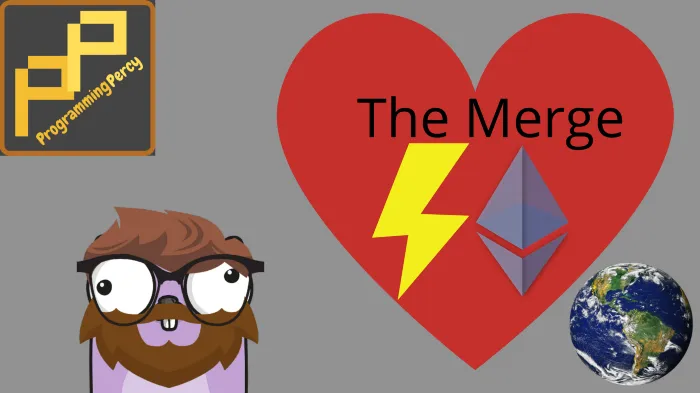The Merge — Ethereum No Longer Drains Electricity Of A Medium-Sized Country To Run
Ethereum reduced the needed energy consumption by 99.5% with The Merge
by Percy Bolmér, September 15, 2022

The 15th of September 2022 is a big day for the Crypto community. On this day, Ethereum performed the so-called Merge.
Not only was the whole blockchain merged with the Beacon chain successfully, but it was also so smooth you didn’t even notice it.
This has been a day that many have been waiting for, some have dreaded it and some have been longing.
There have been discussions on how this update would happen, some investors were afraid that the network would go down, and others believed in a smooth unnoticeable merge.
Speculators say that a successful Merge will mean that investors stop using Bitcoin and come to Ethereum. This could mean a giant increase in usage of the Ethereum network.
What Does The Merge Change
The merge is the transition from Proof-of-Work (PoW) into Proof-of-Stake (PoS) for the Ethereum mainnet consensus mechanism.
In very easy terms, PoW means that a mathematical puzzle is sent to computers all around the world (miners). The first miner to solve the puzzle gets to update the blockchain with the new block and is rewarded. This is a very simple explanation of PoW, there is much more to it.
The puzzles sent are very power-consuming to solve, which is the reason why it takes so much electricity to mine. It doesn’t help that it is sent to every miner contending to solve it, requiring much duplicate computation.
PoS on the other hand solves this by allowing investors to Stake their coins for a chance to validate a new transaction. Instead of validating a whole block like in PoW, you validate a transaction and receive the transaction fees instead.
Instead of mining, you are allowed to become a validator. A validator stakes a minimum amount of tokens, in Ethereum this is 32 Ethereum. Once the validator has staked those, it is eligible for a chance to validate future blocks.Validators responsible to validate a block are randomly selected based on their amount of staked tokens, once a validator validates a block it gets sent out to a randomly selected group of other validators. To secure that a validator is not malicious and validates fake blocks, this group performs the validation and checks that the original validator did its job correctly.
This way the network only needs one computer to solve or validate the transaction instead of broadcasting it to all miners. There is some duplicate computation since the validated block needs to be approved by a small group of other validators.
PoS is often considered more secure since the act of trying to validate fake blocks is penalized by slashing. The tokens you staked get fined and you lose them. The result of this is that if a validator tries to sign a bad block, or double signs conflicting blocks their staked ETH would be burned.
Theoretically, this means, Ethereum has one block per 12 seconds, so in trying to forge a block the validator risks burning 1 Ethereum (max amount) for 12 seconds of transactions. This makes faul play very costly and there for very risky.
How Does This Affect The Energy Consumption
It is no lie that Cryptocurrency has become a natural disaster, draining enormous amounts of electricity, and eating away at mother earth one transaction at a time.
Many I know talk to do not know the implications that cryptocurrency has on the environment, but it is huge.
In fact, a single Ethereum transaction used to consume 200 kWh of electricity and a lot of carbon footprint. With this reduction, the world’s energy consumption is reduced by 0.2 % by this single update.
](/_app/immutable/assets/img1-de70f740.webp)
By changing from PoW in which each challenge was sent to every miner, Ethereum will now send a challenge to one validator, and that validator will send it forward to randomly selected other validators that accept it.
This means the number of computational power needed will reduce drastically.
They have estimated a reduction of 99.5%, so the new average electrical cost for a single transaction should be somewhere around 1 kWh.
The carbon footprint will be somewhere around 0,58 kgCO2, which is 1,235 VISA transactions.
I think this is a huge update to the Ethereum blockchain.
As much as I love cryptocurrencies, I do also love Mother Earth.
If you enjoyed my writing, please support future articles by buying me an Coffee
